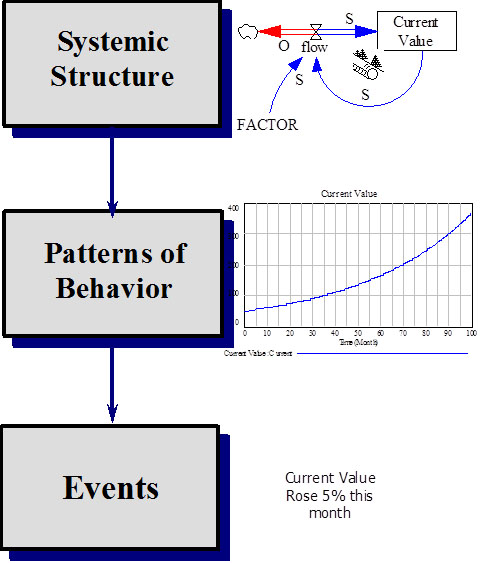The Free Market Center
The three levels at which we can understand the performance of systems consist of Events, Patterns of Behavior, and Systemic Structure. Working from the bottom up each level provides more knowledge about what influences the behavior of the system.
This diagram shows the direction of influence—most important influence at the top.

The description begins with the least informative level of performance—Events—and proceeds to the most informative, and influential, level—Systemic Structure
Events, which amount to one time occurrences—a single result from the systemic processes. Examples of events:
Patterns of behavior, which show a series of events that trace out a pattern over time. These patterns reveal a much deeper level of understanding of system performance. They show behavior over time. Examples of patterns of behavior:
Systemic Structure provides the fundamental determinant of system behavior. The deepest understanding of systemic performance comes from understanding the structure of the system.
© 2010—2020 The Free Market Center & James B. Berger. All rights reserved.
To contact Jim Berger, e-mail: